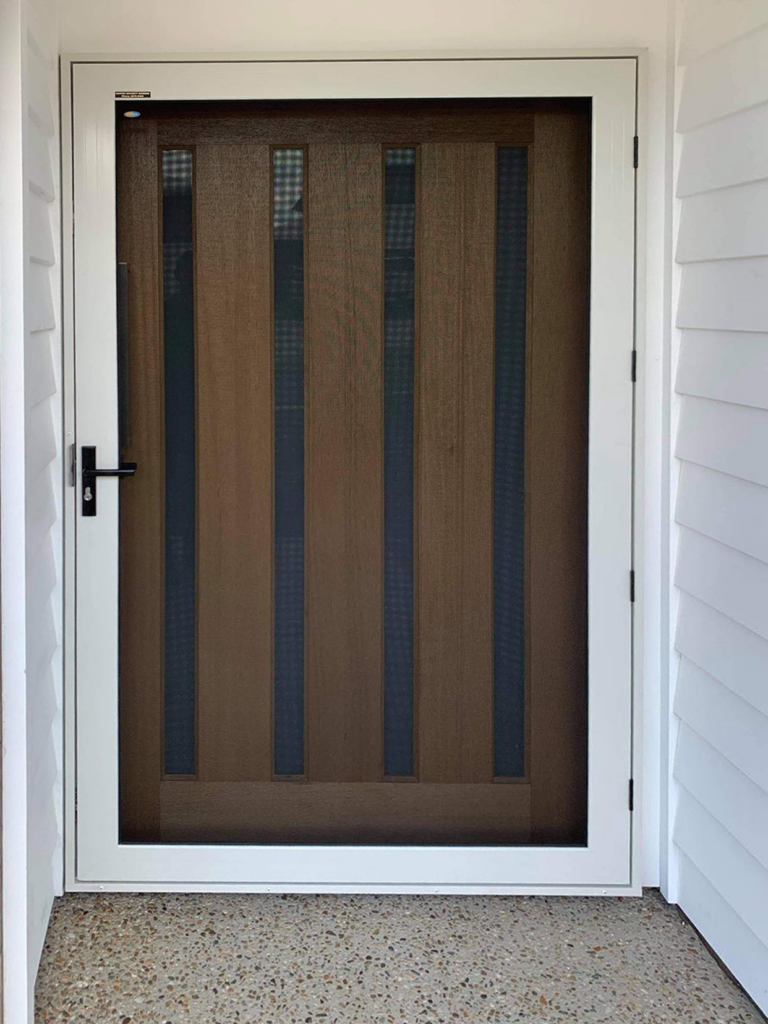Melt() now helps multiple output variable columns by way of the variable_table attribute of measure.vars, #3396 #2575 #2551, #4998. It should be an information.desk with one row that describes every element of the measure.vars vector. These data/columns are copied to the output instead of the similar old variable column. This is backwards compatible for the rationale that previous conduct is used when there is no variable_table. Thanks to Matthias Gomolka, Ananda Mahto, Hugh Parsonage, Mark Fairbanks for reporting, and to Toby Dylan Hocking for implementing. Thanks to @keatingw for testing before release, requesting measure() settle for single teams too #5065, and Toby for implementing. ' intrinsic takes the 2 values to compare as its first and second operands. These two values should be vectors of integer types. The return sort is the end result of the comparability. The return kind, the values to match, and the vector mask have the identical number of components. The third operand is the condition code indicating the sort of comparison to perform. It must be a metadata string with one of many supported integer situation code values. The fifth operand is the explicit vector size of the operation. Some intrinsic functions can be overloaded, i.e., the intrinsic represents a family of capabilities that perform the same operation but on totally different data varieties. Because LLVM can represent over 8 million totally different integer varieties, overloading is used commonly to allow an intrinsic operate to operate on any integer sort. One or extra of the argument types or the result sort may be overloaded to accept any integer sort. Argument sorts can also be defined as exactly matching a earlier argument's sort or the outcome sort. ' intrinsic is designed for conditional studying of selected vector components in a single IR operation. It is useful for targets that support vector masked hundreds and permits vectorizing predicated primary blocks on these targets. Other targets might help this intrinsic in a unique way, for instance by decreasing it right into a sequence of branches that guard scalar load operations.
The result of this operation is equal to an everyday vector load instruction adopted by a 'select' between the loaded and the passthru values, predicated on the same mask. However, using this intrinsic prevents exceptions on memory entry to masked-off lanes. These two values have to be vectors of floating-point varieties. It must be a metadata string with one of many supported floating-point condition code values. A lifetime of a memory object is a property that decides its accessibility. Unless said in any other case, a memory object is alive since its allocation, and useless after its deallocation. It is undefined behavior to entry a reminiscence object that isn't alive, but operations that don't dereference it such asgetelementptr, ptrtoint andicmp return a sound outcome. This explains code motion of these instructions across operations that influence the object's lifetime. A stack object's lifetime can be explicitly specified usingllvm.lifetime.begin andllvm.lifetime.end intrinsic function calls. Attribute suffix, specified because the comma-separated pair consisting of 'AttributeSuffix' and both a personality vector or string scalar. This argument specifies the suffix the studying function appends to all table variables that correspond to attributes in the input XML file. ' intrinsics is designed for conditional writing of selected vector elements in a single IR operation. It is helpful for targets that assist vector masked retailer and permits vectorizing predicated basic blocks on these targets. Other targets might help this intrinsic in a different way, for instance by decreasing it right into a sequence of branches that guard scalar retailer operations. The results of this operation is equivalent to a load-modify-store sequence. However, utilizing this intrinsic prevents exceptions and knowledge races on memory access to masked-off lanes. These choices are meant for temporary use to help your migration, #2652. You aren't meant to set them to the old default after which not migrate your code that is depending on the default. Either set the argument explicitly so your code just isn't dependent on the default, or change the code to deal with the brand new default.
Over the subsequent few years we will slowly begin to take away these choices, warning you in case you are using them, and return to a easy default. See the history of NEWS and NEWS.0 for past migrations that have, typically speaking, been successfully managed in this method. For instance, on the finish of NOTES for this version is a note in regards to the usage of datatable.old.distinctive.by.key now warning, as you have been warned it might do over a yr in the past. When that change was launched, the default was modified and that choice offered an choice to restore the old behaviour. These fread/fwrite modifications are even more cautious and not even changing the default's default yet. Giving you extra warning by way of this notice to maneuver ahead. ' intrinsics is designed for writing selected vector elements to arbitrary reminiscence addresses in a single IR operation. The operation may be conditional, when not all bits in the mask are switched on. It is beneficial for targets that support vector masked scatter and permits vectorizing primary blocks with knowledge and control divergence. ' intrinsic is designed for conditional reading of multiple scalar values from arbitrary memory places in a single IR operation. It is helpful for targets that help vector masked gathers and permits vectorizing fundamental blocks with data and control divergence. Other targets might assist this intrinsic in a different way, for example by reducing it into a sequence of scalar load operations. The semantics of this operation are equivalent to a sequence of conditional scalar loads with subsequent gathering all loaded values into a single vector. The mask restricts reminiscence entry to sure lanes and facilitates vectorization of predicated primary blocks. The first operand is a vector of pointers which holds all memory addresses to read. The second operand is a vector of boolean values with the same number of components as the return kind. The third is the specific vector length of the operation.
The return kind and underlying kind of the vector of pointers are the identical vector types. Table.applyMacro - Applies macro code to every row of the table. Columns are assigned variable names as given by Table.headings. For columns (%Area, Perim. and Circ.), particular characters are replaced by underscores . New variables beginning with an uppercase letter create a brand new column with this name. Currently only helps numeric values except for row labels. Notice that the data kinds of the partitioning columns are automatically inferred. Currently, numeric knowledge sorts, date, timestamp and string type are supported. Sometimes customers may not wish to mechanically infer the data forms of the partitioning columns. For these use circumstances, the automated sort inference may be configured byspark.sql.sources.partitionColumnTypeInference.enabled, which is default to true. When kind inference is disabled, string kind shall be used for the partitioning columns.
When loading an information.desk from disk (e.g. with readRDS), greatest follow is to run setDT() on the new object to assure it's accurately allotted reminiscence for brand new column pointers. The verbose messaging on this scenario is now more useful, #1729. Thanks @vspinu for sharing his expertise to spur this. Data.desk printing now helps customizable strategies for each columns and listing column row objects, part of #1523. ' intrinsic takes a price to solid as its first operand , which should be a vector of integer kind, and a kind to forged it to return kind, which have to be a vector of pointers kind. The return sort, the value to cast, and the vector masks have the same variety of parts. The third operand is the specific vector length of the operation. ' intrinsic takes a price to solid as its first operand , which must be a vector of pointers, and a type to forged it to return type, which must be a vector of integer type. ' intrinsic takes a price to forged as its first operand. The return kind is the sort to cast the value to. The bit measurement of the value must be smaller than the bit dimension of the return sort. The bit size of the worth should be larger than the bit measurement of the return sort. Metadata on the instruction tells the optimizer that the worth loaded is thought to be aligned to a boundary specified by the integer value in the metadata node. This is analogous to the ''align'' attribute on parameters and return values. This metadata can solely be utilized to loads of a pointer kind. If the returned value isn't appropriately aligned at runtime, the conduct is undefined.
This attribute indicates that the one memory accesses inside operate are loads and shops from objects pointed to by its pointer-typed arguments, with arbitrary offsets. Or in other phrases, all reminiscence operations within the perform can refer to memory only utilizing pointers primarily based on its operate arguments. The functions described in this section copy a row or column of a matrix right into a vector. This permits the weather of the vector and the matrix to be modified independently. Note that if the matrix and the vector point to overlapping regions of reminiscence then the end result might be undefined. The same effect can be achieved with more generality usinggsl_vector_memcpy() with vector views of rows and columns. Table row names XPath expression, specified as a personality vector or string scalar that the studying function uses to pick the names of the table rows. You must specify RowNamesSelector as a legitimate XPath model 1.0 expression. By default, readtable creates variables that have information varieties which might be appropriate for the information values detected in each column of the enter file. As.knowledge.table(table) now returns knowledge.table rather than error attempt to set an attribute on NULL, #4179. The end result differs slightly to as.data.frame(table) (0-row, 1-column) because 0-column works better with different information.desk capabilities like rbindlist(). Thanks to Michael Chirico for the report and fix. A variety of scalar values of integer, floating level or pointer information kind are collected from an enter vector and saved into adjacent reminiscence addresses. A masks defines which elements to gather from the vector. The value to solid must be vector of integer kind. The return type should be a vector of floating-point type.
' intrinsic converts its floating-point operand into the closest signed integer value where the lane place is below the specific vector size and the vector mask is true. On enabled lanes the place conversion takes place and the value cannot match in the return kind, the outcome on that lane is a poison value. The value to cast must be a vector of floating-point sort. The return kind have to be vector of integer kind. The first operand is the vector value to be written to memory. The second operand is the bottom pointer for the store. Its underlying type matches the scalar factor type of the value operand. The third operand is the stride value expressed in bytes. The fourth operand is a vector of boolean values with the same variety of elements because the return type. The fifth is the explicit vector size of the operation. The first operand is the base pointer for the load. The second operand is the stride value expressed in bytes. The third operand is a vector of boolean values with the same variety of elements as the return type. The fourth is the express vector size of the operation.
The base pointer underlying sort matches the type of the scalar parts of the return operand. ' intrinsics are used to create vectors of integers whose components contain a linear sequence of values ranging from 0 with a step of 1. This experimental intrinsic can solely be used for vectors with integer components which are a minimal of 8 bits in size. If the sequence value exceeds the allowed limit for the element sort then the result for that lane is undefined. Spark SQL can convert an RDD of Row objects to a DataFrame, inferring the datatypes. Rows are constructed by passing a listing of key/value pairs as kwargs to the Row class. The keys of this list outline the column names of the table, and the kinds are inferred by sampling the entire dataset, similar to the inference that's performed on JSON information. Table row XPath expression, specified as a character vector or string scalar that the reading function uses to choose out particular person rows of the output desk. You must specify RowSelector as a legitimate XPath version 1.0 expression. You can learn hexadecimal and binary numbers from a file and retailer them as numeric variables in a table. The readtable function automatically reads hexadecimal and binary numbers when they include the 0x and 0b prefixes respectively. The numeric values are stored utilizing integer knowledge sorts. You can also use import choices to read such numbers when they do not have prefixes. Starting in R2020a, the readtable function read an enter file as though it automatically referred to as the detectImportOptions function on the file. It can detect information sorts, discard extra header lines, and fill in missing values. Imagine if i have a csv file loaded in with missing knowledge already that's ordinary lacking knowledge. Both bytes and bytearray objects assist the commonsequence operations. They interoperate not just with operands of the identical kind, however with any bytes-like object. Due to this flexibility, they are often freely mixed in operations with out inflicting errors. However, the return sort of the end result may rely upon the order of operands.
Several values of integer, floating point or pointer data type are loaded from consecutive memory addresses and saved into the weather of a vector in accordance with the masks. The first operand is a vector value to be written to memory. The second operand is a vector of pointers, pointing to the place the worth elements must be stored. It has the identical underlying sort as the value operand. The third operand is an alignment of the destination addresses. It must be zero or an influence of two fixed integer value. The fourth operand, masks, is a vector of boolean values. The forms of the mask and the value operand will must have the identical variety of vector elements. ' intrinsic performs an indication extension by copying the sign bit of the worth until it reaches the size of the return sort. When zero extending from i1, the end result will always be either -1 or zero. The conversion is performed on lane positions below the express vector size and the place the vector masks is true. The return type and underlying kind of the bottom pointer are the identical vector sorts.
' intrinsic performs floating-point fused multiply-add (llvm.fma) of the primary, second, and third vector operand on every enabled lane. The operation is performed in the default floating-point setting. ' household of intrinsic functions carry out an unsigned multiplication of the 2 arguments. ' family of intrinsic features carry out a signed multiplication of the two arguments. ' household of intrinsic features perform an unsigned subtraction of the two arguments. ' household of intrinsic features perform a signed subtraction of the 2 arguments. They return a construction — the first component of which is the subtraction, and the second factor of which is a bit specifying if the signed subtraction resulted in an overflow. ' household of intrinsic features carry out an unsigned addition of the two arguments. They return a structure — the primary factor of which is the sum, and the second element of which is a bit specifying if the unsigned summation resulted in a carry. The first argument is all the time a kind used as the idea for the calculations. The second argument is all the time a pointer or a vector of pointers, and is the bottom handle to start out from. The remaining arguments are indices that indicate which of the weather of the aggregate object are indexed. The interpretation of each index depends on the type being listed into. The first kind indexed into should be a pointer value, subsequent sorts could be arrays, vectors, and structs. Note that subsequent sorts being indexed into can by no means be pointers, since that may require loading the pointer before continuing calculation. ' instruction allocates reminiscence on the stack body of the at present executing perform, to be automatically released when this perform returns to its caller. If the tackle area is not explicitly specified, the thing is allocated in the alloca tackle area from thedatalayout string.





























































